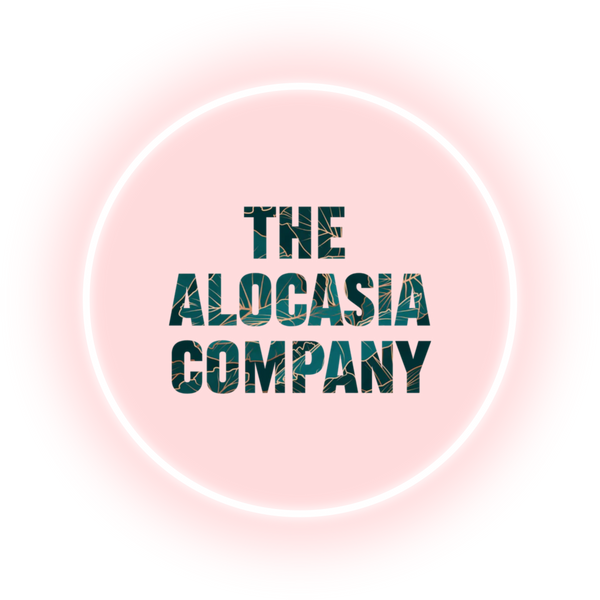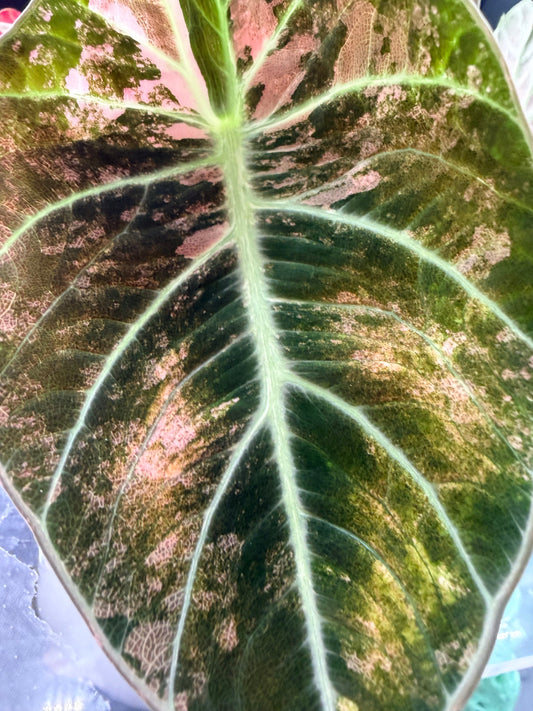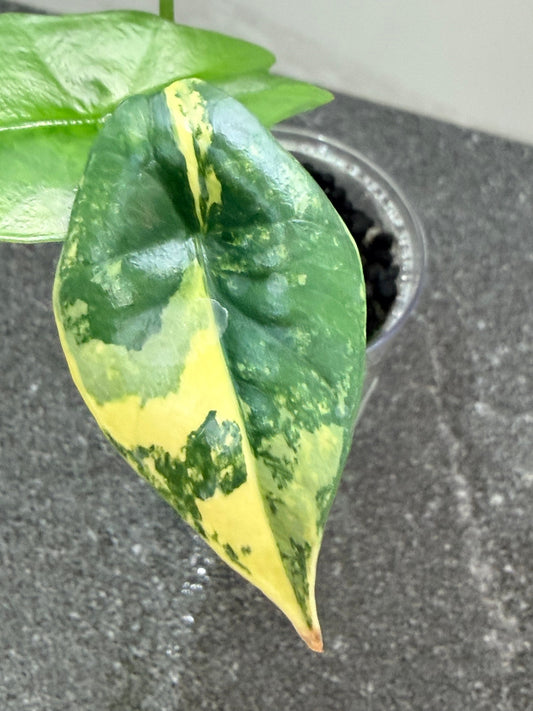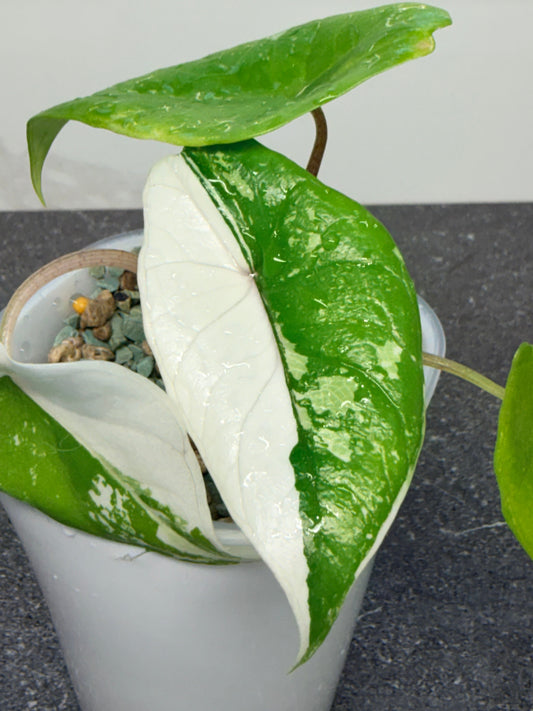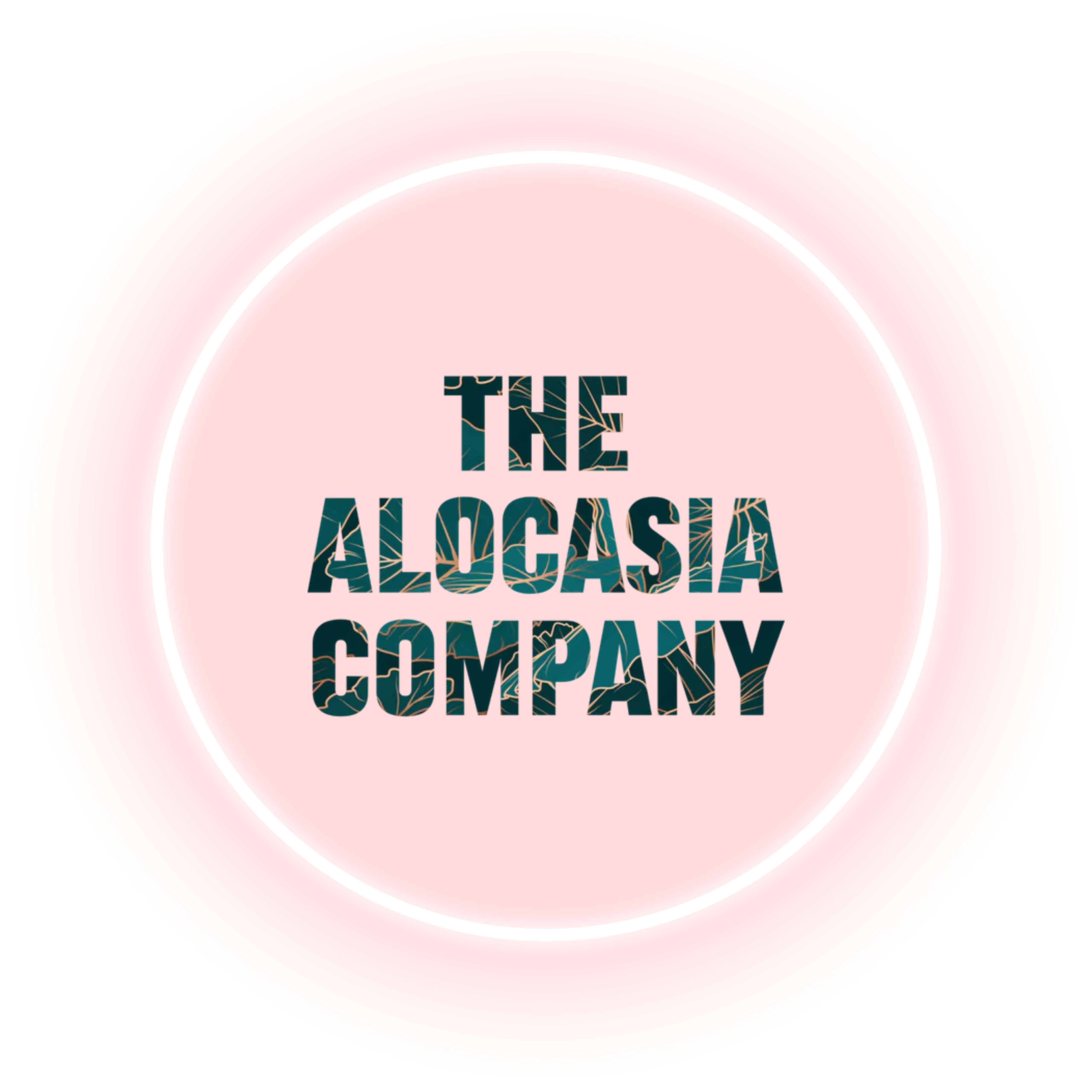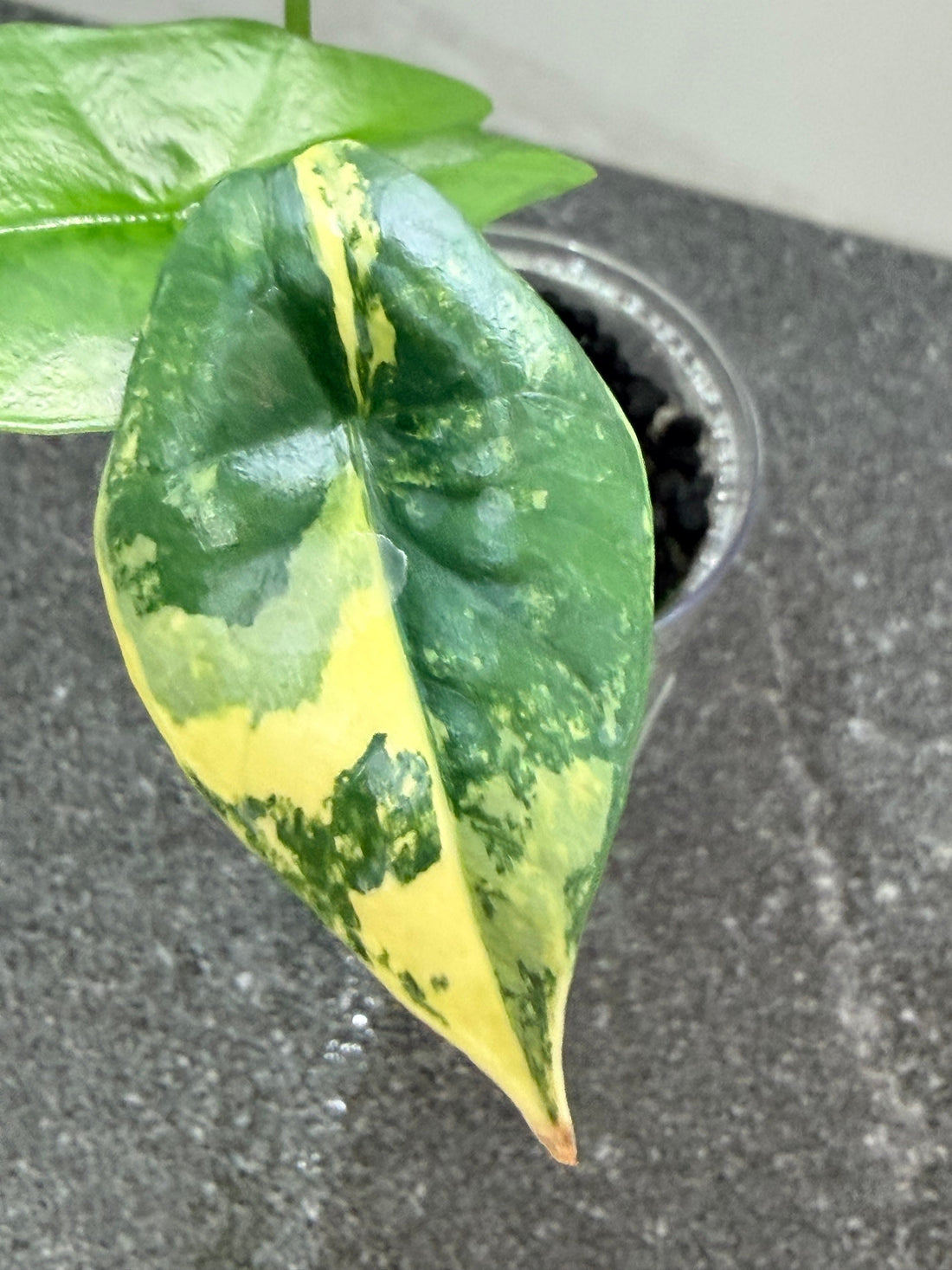
Aurea Variegation in Alocasia
Share
Aurea Variegation in Alocasia: The Golden Touch Explained
Aurea variegation—the stunning yellow and golden patterns found on certain Alocasia varieties—represents one of the rarest and most striking forms of variegation in the plant world. While albo (white) variegation gets much of the attention, aurea brings warmth and sunshine to your plant collection in a way that's uniquely captivating. In this blog post, we'll explore what makes aurea variegation special, the science behind those golden hues, and how to care for these precious plants.
What Is Aurea Variegation?
The term "aurea" comes from the Latin word for gold, perfectly describing the yellow, golden, and lime-coloured patterns that appear on aurea-variegated Alocasia. Unlike the stark white of albo variegation or the soft pastels of pink variegation, aurea presents as vibrant yellows, buttery creams, and golden greens.
Popular aurea-variegated Alocasias include:
- Alocasia macrorrhiza 'Aurea Variegata'
- Alocasia Simpo Aurea
- Alocasia gageana aurea (also sold as Alocasia odora 'California Aurea')
- Alocasia Black Velvet 'Gold Aurea Variegata'
These varieties showcase the spectacular range of golden variegation, from pale lemon yellows to deep buttery golds.
The Science Behind Aurea Variegation
The Yellow Difference
Aurea variegation is fundamentally different from albo variegation in a crucial way: while white variegation represents a complete absence of pigment, yellow variegation indicates the presence of some pigments but the absence of others.
In Scientific Terms
Yellow or golden variegation occurs when cells lack chlorophyll (specifically chlorophyll a and b, which are green) but retain carotenoids—the yellow, orange, and red pigments also found in carrots, corn, and autumn leaves. When chlorophyll is absent or severely reduced but carotenoids remain, the result is that characteristic yellow-gold appearance.
Like albo and pink variegation, aurea variegation is typically chimeric—a genetic mutation affecting different cell layers within the plant. The mutation disrupts chlorophyll synthesis pathways while leaving carotenoid production intact or partially intact. This means:
- The yellow sections still contain some cellular machinery for photosynthesis
- They can contribute (albeit minimally) to the plant's energy needs
- The cells are not completely pigment-free like albo variegation
In some cases, different levels of carotenoid concentration create variations in yellow intensity, ranging from pale cream to deep golden yellow.
In Simple Terms
Think of plant pigments as a paint palette with three main colors: green (chlorophyll), yellow (carotenoids), and red-purple (anthocyanins). In normal green leaves, the green paint is so dominant you can't see the yellow underneath—it's like painting yellow over green, you only see the green.
With aurea variegation, the genetic mutation removes the green paint from certain areas, but leaves the yellow paint behind. Now you can finally see those golden tones that were always there, just hidden! It's like removing a green filter to reveal the warm sunshine colors underneath.
This is why aurea variegation looks yellow rather than white—the cells aren't empty of color, they're just missing the green that normally covers everything up.
Why Aurea Is Rarer Than Albo
If you've noticed that aurea-variegated Alocasia are harder to find and often more expensive than their albo counterparts, there's a good reason. Aurea variegation is genetically rarer because:
Genetic Factors
- The specific mutation that removes chlorophyll while preserving carotenoids is less common
- The genetic stability varies—some aurea plants maintain their golden tones better than others
- Fewer Alocasia species naturally produce this type of mutation
Limited Base Varieties Not all Alocasia varieties can produce aurea variegation. The plant needs the right genetic background and sufficient carotenoid production in its normal form to create visible golden variegation when chlorophyll is removed.
Propagation Challenges Like all chimeric variegation, aurea can only be maintained through vegetative propagation (division or corms), never from seed. This limits how quickly rare varieties can be reproduced.
Aurea Variegation vs. Other Types
Aurea vs. Albo
Albo (white): Complete absence of all pigments
- Cannot photosynthesise at all
- More sensitive to environmental stress
- Bright white appearance
- More common genetically
Aurea (yellow/gold): Absence of chlorophyll, presence of carotenoids
- Can contribute minimally to photosynthesis
- Slightly less delicate than pure white
- Warm golden appearance
- Rarer genetically
Aurea vs. Pink
While pink variegation results from anthocyanins showing through chlorophyll-free areas, aurea results from carotenoids being revealed. Some exceptional plants can even display both—areas with carotenoids show yellow, while areas with anthocyanins show pink, creating stunning multi-colored leaves. We tend to name these 'Tri-Colour'.
How Aurea Variegation Develops
Pattern Variation
Golden variegation can appear in several forms:
- Marbled: Random splashes and streaks of yellow throughout the leaf
- Sectoral: Large sections or blocks of golden color
- Splashed: Irregular spots and patches
- Half-moon: One half of the leaf displays golden tones
The pattern depends on which cells were affected by the mutation and how they divided during leaf development.
Color Intensity Changes
The intensity of aurea variegation can vary based on several factors:
Age and Maturity In varieties like Alocasia Black Velvet Aurea, the golden variegation becomes more apparent as leaves harden and mature. Young, newly unfurled leaves may appear more pale or subtle, with colors intensifying over days or weeks.
Light Exposure While light doesn't create or enhance variegation genetically, adequate bright indirect light ensures healthy leaf development, which in turn allows the full expression of golden colors.
Plant Health Stressed plants may produce less vivid variegation, while healthy, well-fed plants display more saturated golden tones.
Caring for Aurea Variegated Alocasia
Aurea-variegated Alocasias require attentive care, though they're generally slightly hardier than albo varieties since the yellow sections can contribute minimally to photosynthesis.
Light Requirements
Bright, indirect light is essential for aurea-variegated Alocasia:
- Adequate light supports healthy leaf development and vivid coloration
- Too little light causes the plant to produce more green leaves
- Direct sunlight will scorch the delicate golden sections
- East-facing windows or LED Grow Lights from our store work well
Important note: Light doesn't increase variegation—it's genetically determined—but proper lighting helps the plant express its variegation healthily.
Temperature and Humidity
Maintain stable tropical conditions:
- Temperature: 18-27°C (65-80°F)
- Humidity: 60-80% for optimal health
- Avoid temperature fluctuations and cold drafts
- Golden sections can brown in low humidity
Watering Strategy
Consistent moisture without waterlogging:
- Water when the top 2-5 cm of soil feels dry
- Ensure excellent drainage to prevent root rot
- Use room temperature water to avoid shock
- Golden-variegated sections are somewhat less sensitive to moisture stress than white areas, but still require careful monitoring
Soil and Fertilization
Soil Mix:
Use a well-draining aroid mix:
We recommend Lechuza Pon in a self watering pot
Repot only when necessary, as pink-variegated plants can be sensitive to transplant stress.
Feeding:
- Use balanced, diluted fertiliser (half strength)
- Feed monthly during growing season (spring-summer)
- Reduce or stop feeding in winter when growth slows
- Aurea plants grow slower than green varieties but faster than albo
Repotting
Repot only when necessary:
- Choose a pot only slightly larger than current
- Repot in spring for best results
- Be gentle with roots as variegated plants recover more slowly
- Use fresh, appropriate soil mix
The Genetic Stability of Aurea
Aurea variegation, being chimeric, shares the instability characteristic of other variegation types. However, the aurea pattern is genetically fixed once present—environmental factors don't influence whether variegation appears, though they affect plant health.
What This Means:
- No amount of light, fertilizer, or care will create aurea variegation if the genetics aren't there
- Conversely, poor care won't remove the variegation (though it may cause the plant to produce more green leaves)
- Each leaf's variegation pattern is unique and unpredictable
- The plant may alternate between heavily variegated and mostly green leaves
Propagating Aurea Alocasias
Maintaining that precious golden variegation requires vegetative propagation:
Division Method
- Separate rhizomes during repotting in spring
- Ensure each division has at least one growth point
- Divisions from heavily variegated sections tend to produce more variegation
- Keep in high humidity while establishing
Corm Propagation Corms are baby bulbs produced by the mother plant and carry the same genetics. If you want to start a corm journey, try our Corm Starter Kit with three mystery corms!
Important Tips:
- Never propagate from all-green sections if you want to maintain variegation
- Be patient—aurea plants establish slowly after propagation
- Maintain consistent conditions during the vulnerable establishment period
- Keep an eye out for corms when repotting
For more detailed information on corm propagation timing, see our guide on [How Long Does It Take for a Corm to Sprout?].
The Value and Collectibility Factor
Aurea-variegated Alocasias command premium prices for several compelling reasons:
Genetic Rarity The mutation is less common than albo variegation, making these plants harder to find.
Limited Availability Fewer base varieties can produce aurea, and those that do must be propagated slowly through division.
Unique Aesthetic The warm golden tones offer something different from the cooler white and pink variegations, appealing to collectors seeking variety.
Stability and Expression Well-established aurea varieties like Alocasia odora 'California Aurea' show consistent, stunning variegation that makes them highly desirable.
Cultural Significance In many cultures, gold symbolizes prosperity and luck, adding emotional value to these already stunning plants.
Common Challenges and Solutions
Fading Yellow Color
If golden sections appear pale or washed out:
- Increase light levels gradually (ensure still indirect)
- Check for nutrient deficiencies and feed appropriately
- Verify humidity levels are adequate
- Ensure the plant isn't rootbound
Browning Golden Sections
Brown patches on yellow areas indicate:
- Direct sun exposure (move to bright indirect light)
- Low humidity (increase to 70%+)
- Overwatering or poor drainage (adjust watering routine)
- Cold drafts (relocate to stable temperature area)
Reversion to Green
More green leaves appearing:
- Increase light levels to support variegation expression
- Prune reverted growth to redirect energy
- Be patient—variegation often returns with optimal care
- Propagate from most variegated sections
Slow Growth
Aurea plants naturally grow slower, but extremely slow growth may indicate:
- Insufficient light
- Nutrient deficiency
- Rootbound condition
- Dormancy (normal in winter)
Aurea Varieties to Know
Alocasia macrorrhiza 'Aurea Variegata' The giant of golden Alocasias, with massive leaves featuring lime-yellow and deep green marbling. Can reach impressive sizes with proper care.
Alocasia odora 'California Variegata Aurea' Exceptionally rare with bold golden-yellow splashes. More compact than macrorrhiza varieties, making it ideal for collectors with limited space.
Alocasia Black Velvet 'Gold Aurea' A stunning combination of velvety dark foliage with deep yellow variegation that intensifies as leaves mature.
Alocasia gageana aurea Features a lovely golden variety with heart to arrow-shaped leaves in a spectrum from dark to light green with yellow to white variegation.
Final Thoughts
Aurea variegation represents one of the most special mutations in the Alocasia world. The presence of carotenoids without chlorophyll creates those warm, golden tones that bring sunshine into any collection. Understanding that this golden coloration is genetically determined and results from selective pigment absence helps us appreciate both the science and the beauty of these remarkable plants.
While aurea-variegated Alocasias demand patience and proper care, they reward dedicated growers with living artwork that's both rare and radiant. The warm golden hues offer something distinctly different from other variegation types, and their slightly improved photosynthetic capability makes them marginally less challenging than pure albo varieties.
For more insights into the fascinating world of Alocasia variegation, explore our companion articles: Albo Variegation in Alocasia, Pink Variegation in Alocasia, and Complete Guide to Alocasia Variegation Types. Whether you're just beginning your collection or looking to add something special, understanding aurea variegation will help you grow these golden beauties with confidence.
The rarity, beauty, and warmth of aurea-variegated Alocasias make them true treasures in the plant world—golden gems that bring year-round sunshine to your indoor jungle.
Find Aurea Variegated Alocasia here
